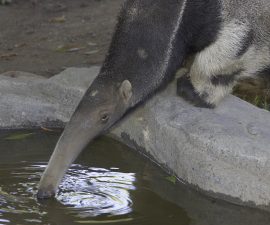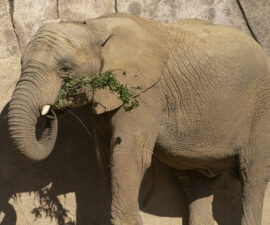As one of the most visually explosive bronze sculptures in Southern California, Rex the lion is an exciting welcome for guests at the San Diego Zoo. Pouncing from the sky, muscles rippling, the gravity-defying, 27-foot-tall, 20,000-pound lion is the largest cantilever bronze animal statue in the world. Cast by Artworks Foundry, in Berkeley, California the dramatic sculpture is a symbol of where the Zoo came from a century ago—it really did begin with a roar! Unveiled in the spring of 2018, Rex has been fearlessly facing the elements, including scorching summer days, drenching down pours, and a bevy of birds perching on his tail and mane. It was time to give Rex some love. Riding my bike past the Zoo one day, I saw the crew of three from Artworks Foundry diligently working on the lion. I set up an interview with team leader Karl Reichley, a sculpture patina specialist, for the following morning. I learned a lot.
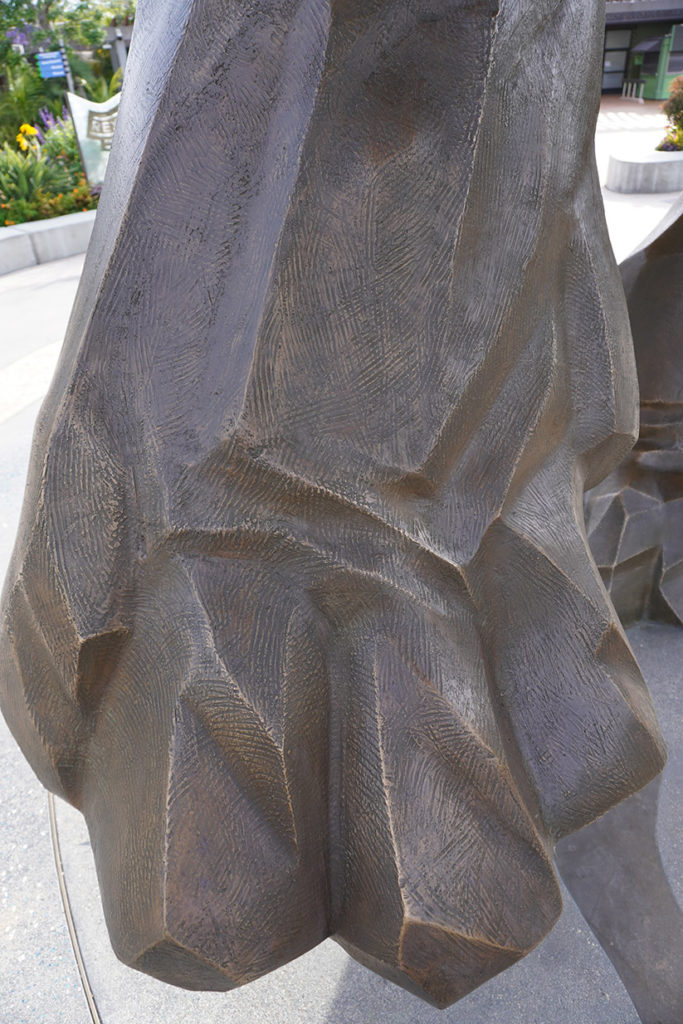
We met, masks on, in front of the Zoo. Karl has been in the patina business for decades, working with artists, architects, home owners, and commercial property clients. His website explains that the goal is to “Create, revive, and restore sculpture to its own pristine presence as intended by the sculptor’s vision.” And that’s what the team was doing with Rex. With such a sizable subject it seemed like a challenge. “The practical side of art is the grind,” Karl sagely observed. He explained that when Rex was installed, it was waxed, but didn’t have any “covering” so it was a bright, sparkling piece. But two years of marine weather and countless birds (and bird poop) had dulled the bronze finish. “Bronze has a mind of its own,” he said. “Moisture pickles the color.”
Bronze is an alloy of copper, tin and other metals making it stronger than copper alone. Patina is outside the natural golden color of bronze and results from a chemical reaction with the copper in the bronze that changes the surface color of the piece. It can be natural, human-made, or both. A stunning example of natural patina appears on the Statue of Liberty. The striking blue-green color, called verdigris, is the result of decades of weather and saltwater reacting with the copper in the bronze. But back to Rex.
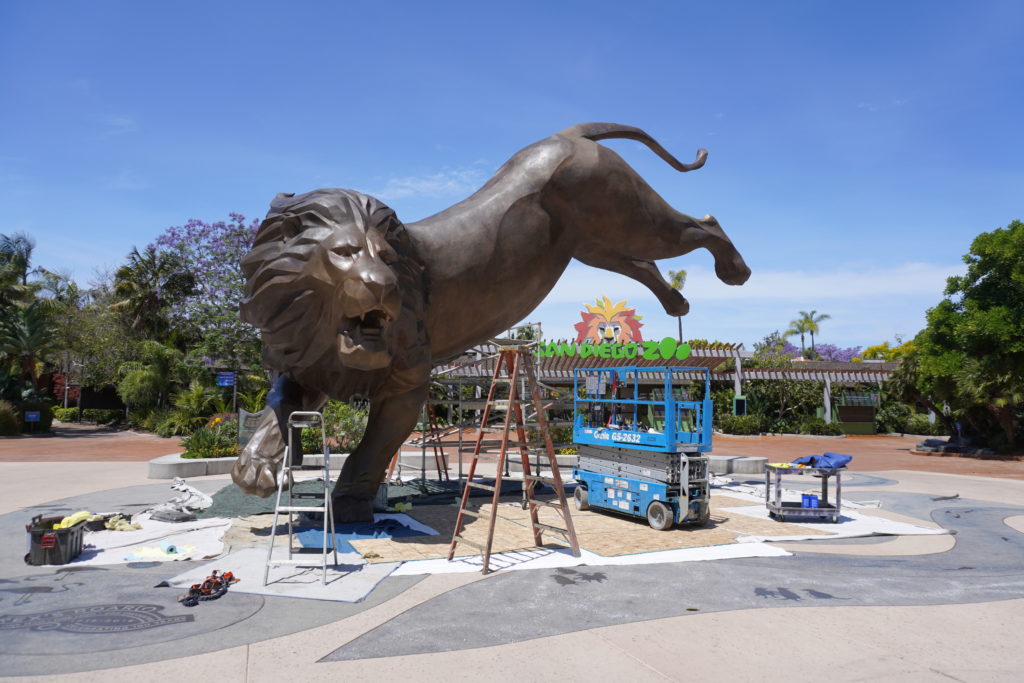
The team began “hand flapping” with 80-grit sandpaper. Karl said it was “Double-double: cleaning the wax out and burnishing in color.” The lion sculpture does not have a “weep hole” on top of the mane, which would let water pass through, so there was water stain and bird poop that had to be removed. One fellow was on a scissor jack working on the tail, over 25 feet in the air. Up close, Rex has a fair amount of texture. “It’s got a little chatter, but Scotch Bright is helping to smooth it out to a starting point, and prepare the metal for a good patina.”
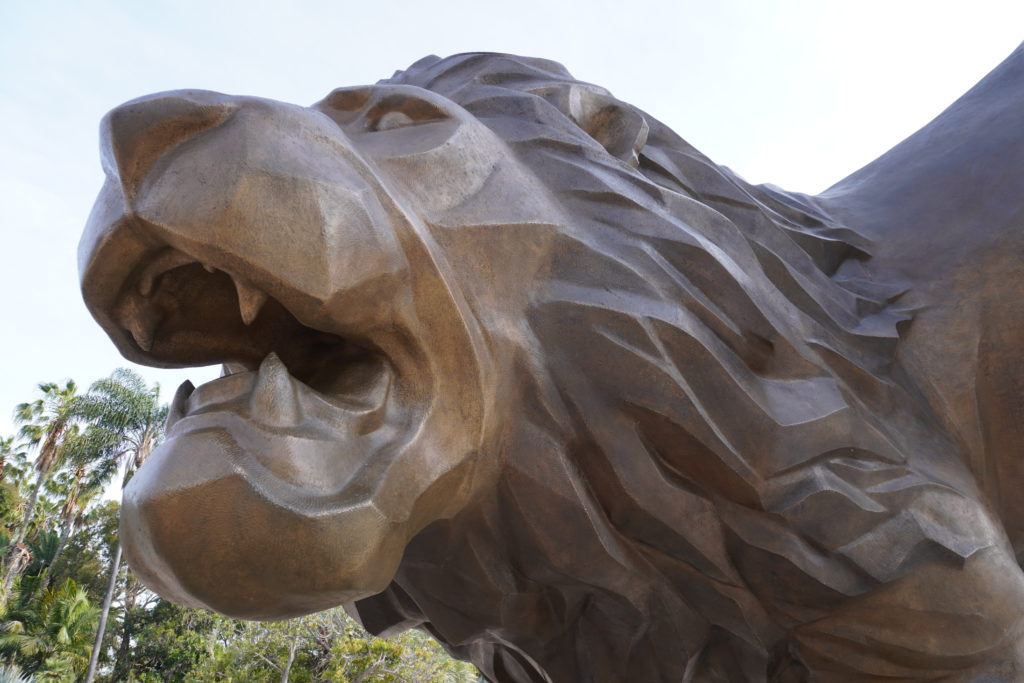
Patina comes in a visually delicious range of colors from near turquoise to ember red-black; it embellishes the bronze. For Rex, the green peeking through was helpful, as it is part of the French brown patina they were going for. The overall color is artistically manipulated with chemicals and a torch. To apply the desired patina, the sculpture is heated up, then chemicals are applied using a metal-free pastry brush and a spray bottle. “The torch accelerates the patina process,” explained Karl.
Different chemicals on the bronze achieve different colors: Liver of sulfur (potash) crates a golden-brown to nearly black color; ferric nitrate leads to golds, browns, and reds; cupric nitrate forms greens and blues. With such a dramatic, frozen-in-space pose, Karl wanted to ensure Rex had highlights and lowlights burnished in to the overall form. The lion’s mane is darker than his face, creating drama and his bodylines are accentuated in a subtle but effective way. Lastly, the team applied a thin coat of Johnson’s wax—“You can’t overdo it, or it turns white”—and buffed it out. As you can see by the picture above the title, Rex is back to his “pristine presence” and waiting to welcome guests to the Zoo in all his rich, fresh patina glory.
Karyl Carmignani is a staff writer for San Diego Zoo Global. Read her previous story, Feet First.


